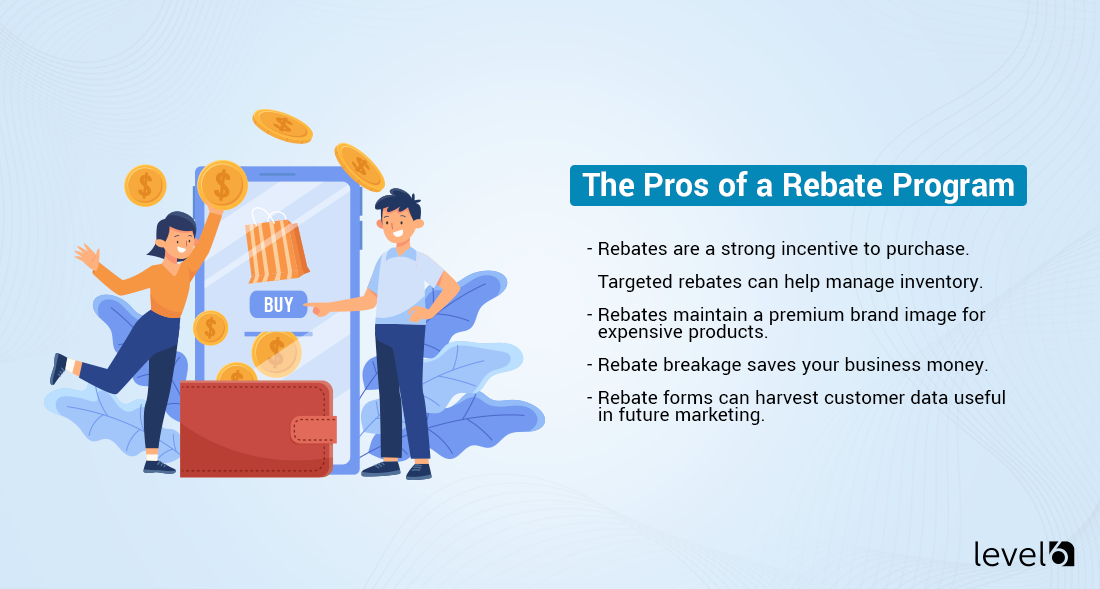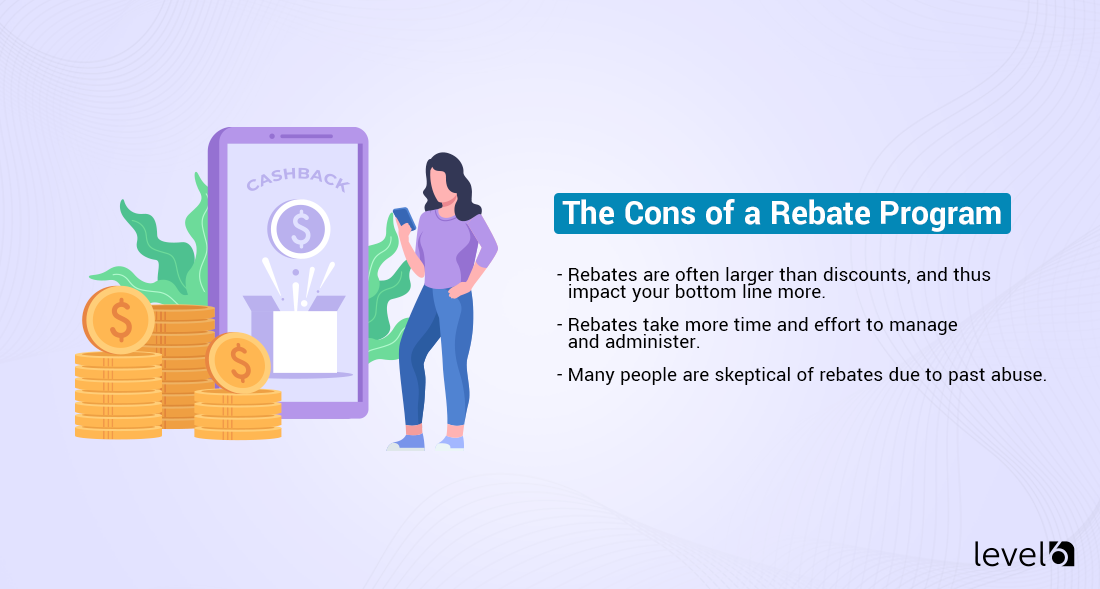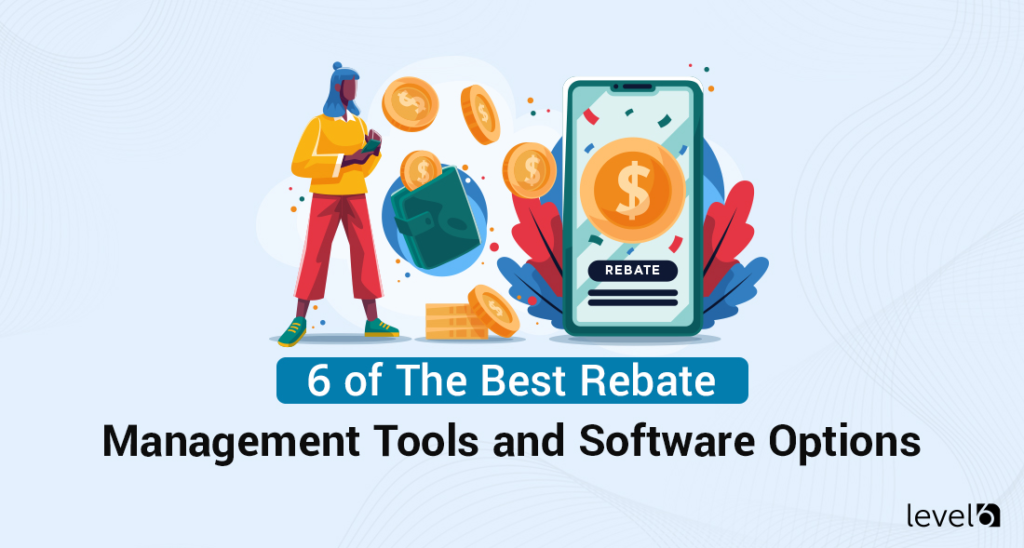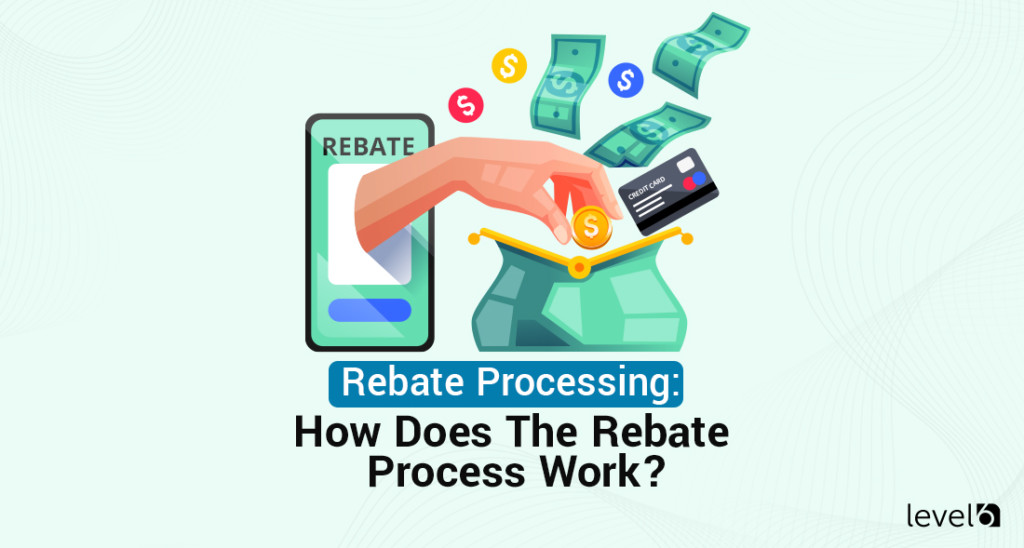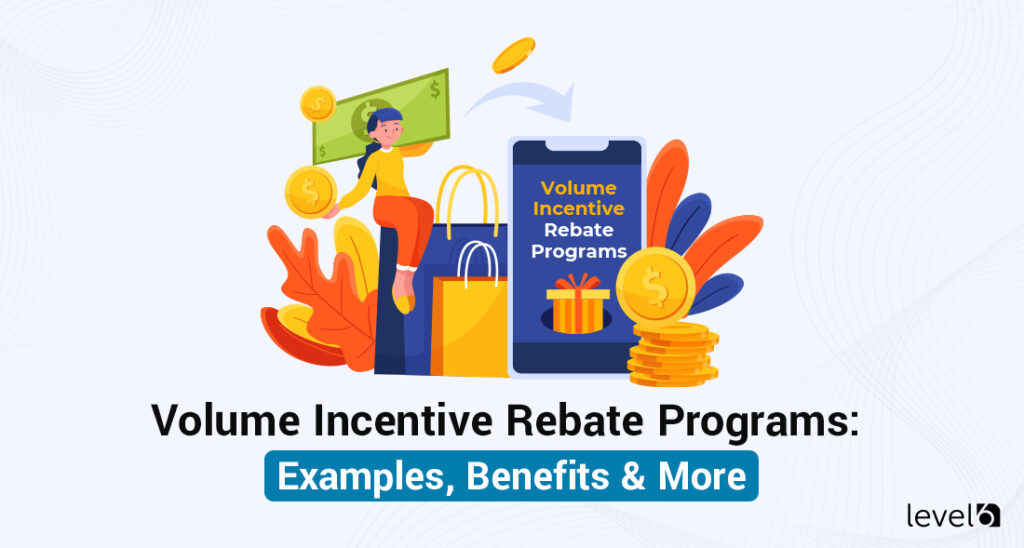Rebate Programs: How They Work and The Pros & Cons
You’ve likely heard of rebates before, but whether what you’ve heard is positive or negative is up in the air. Some people love rebates; others have had nothing but negative experiences claiming them and are inherently skeptical.
Rebates can be a powerful incentive for encouraging customer conversions, and they have many tangible benefits to the company offering them. On the other hand, no program is perfect, and rebates also have their share of downsides. The key is knowing the pros and cons to decide if a rebate program is right for you.
Luckily, we’re here to explain everything and help you decide.
What Are Rebate Programs and How Do They Work?
The general definition of a rebate is simple. From MW:
“A return of a part of a payment.”
Rebates are a way for companies to offer a product for sale more attractive without diminishing the perceived value by reducing its price. A rebate is generally either a fixed amount of money or a percentage of a purchase total. It is offered as an incentive to make a purchase.
A rebate is different from a sale. With a sale or price reduction, the customer only needs to pay the reduced rate to buy the product on sale. With a rebate, the customer still needs to pay the product’s total price but can receive cash back later when they claim the rebate.
Rebates are a relatively new practice, though accounts disagree about where they were invented. Some claim the first modern rebates came from car companies in the 1970s. Others mention grocery stores offering rebates on in-store items. Still, others mention rebate programs from the 1800s, which were often exploitative.
The actual mechanics of a rebate are simple.
- You offer a product for sale at a regular price.
- You provide a rebate of $X, where X is some percentage of the cost of the item, often 10%.
- The user buys the item at retail price and then claims the rebate to receive some of their money back.
In order to claim a rebate, typically, a buyer needs to receive the item and make enough use of it to find a serial number. They file paperwork (either physically, which they mail-in, or digitally, via email or a website submission form) with information including the serial number, purchase date, personal information, and whatever else may be required to validate the purchase. Once the purchase is reviewed and proven legitimate, the rebate is issued; a value from the purchase price is refunded to the buyer.
Looking to learn more about an incentive, rebate
or reward program for your business?
Curious about costs?
Try our instant pricing calculator:
Rebates can have a wide range of different values and qualifiers. Some rebates are relatively small and uncomplicated; anyone who makes the purchase within a specific time can claim it. Others require minimum purchase amounts, volume purchases, or proof of usage of the product. These typically help avoid issues of abuse and loopholes that harm a business.
What About Instant Rebates?
“Instant” rebates are rebates that apply immediately at the time of purchase.
The customer makes a purchase of the item at “full price” but has the rebate value immediately applied. In truth, this reduces the cost of the item rather than requiring a rebate process, making it more akin to a sale than a rebate.
Truthfully, instant rebates are a marketing gimmick and just another name for a sale. They aren’t genuinely rebated at all. While they may mechanically work a little different than a sale – they may have qualifiers on the purchase, like volume or purchase location – they lack many of the benefits of actual rebates. Thus, it’s difficult to call them rebates, despite the name.
Are Rebate Programs Legal?
Of course! In general, rebates are legal. However, there are some stipulations and restrictions.
State laws vary, so make sure the rebates you want to offer to comply with the rules. For example:
“A number of state laws place restrictions on rebate pricing advertising. Several states, including California, New York, and Oklahoma, require that rebate offers clearly and conspicuously state the actual (pre-rebate) price of the subject products or services. Connecticut and Rhode Island take it a step further and forbid offerors from displaying the discounted (post-rebate) price at all.” – KMT.
Rebates also must have clear, reasonable timeframes for redemption, including the amount of time it takes your company to process and issue rebates. A common issue in the past was companies offering rebates, only to drag their feet for extreme periods of time to avoid issuing the money – this is now illegal.
Generally, any roadblock or technicality that could be used to deny a rebate is frowned upon or outright illegal. For example, certain states mandate that a partial rebate form should be grounds to reach out to the customer and ask for the remaining information, rather than simply denying the rebate.
These laws mainly exist to prevent abuse of rebate programs by companies; each law is in place due to past abuse. If you’re operating in good faith, chances are you won’t have a problem offering a rebate program.
The Pros of a Rebate Program
Now that you’re familiar with what a rebate program is, you can learn about the benefits of rebates for your business.
1. Rebates are a strong incentive to purchase.
Much like sales and discounts, rebate programs are a way for individual shoppers to obtain a product they want to buy for a lower overall cost than it would require if they were to purchase it without a rebate.
Additionally, rebates can allow customers to “overreach” on a purchase they desire, obtaining something more prestigious or expensive than they otherwise would.
Rebate programs also help raise awareness for the products under rebate. Since you can advertise rebate programs themselves, this serves as a way to promote your products over the competition in certain situations.
2. Targeted rebates can help manage inventory.
Any price adjustment that incentivizes sales is one that you can use to manage inventory. If you have too much of a given item, you can offer a rebate on it to help clear out that inventory. Likewise, rebates can serve as a great way to sell more of a product to make way for a newer version or subsequent iteration of that product.
Are rebates better than sales in this respect? It depends mainly on the value of the rebate/sale and on how price-motivated your customers are. If your typical customer isn’t concerned with price, a rebate won’t be any more effective. If they are, a rebate is often larger than a sale (for reasons relating to breakage, which we’ll cover momentarily), so it can be a stronger incentive to buy.
3. Rebates maintain a premium brand image for expensive products.
One of the significant differences between a rebate and a sale is the price at purchase. If you offer a product for $500, and you put it on sale for 10% off, your customer only needs to pay $450 for it. If you offer a $50 rebate, the customer still needs to pay $500 for it and jump through hoops to get their $50 back.
This gap isn’t a massive difference in those numbers. Still, the difference in perception can be significant when you’re talking about premium and luxury goods or expensive purchases like a car. A sale on a car makes a customer wonder what might be wrong with it for it to be selling at a discount, while a rebate feels more like an optional benefit they can take advantage of to exploit a system, even if they amount to the same thing.
4. Rebate breakage saves your business money.
Above, we mentioned breakage; what is it, in terms of rebates?
Breakage in an incentive program is the percentage of people who qualify for the incentive but don’t redeem it. Earning points in a loyalty program and not spending them before they expire is a typical example.
For rebates, breakage is the percentage of people who purchase an item eligible for a rebate but never seek to redeem the rebate. Sometimes this happens because of the burden of filing for the rebate, but most often, it’s due to inattention, lost paperwork, or simply not caring about it.
Breakage is beneficial to a company. Each product purchased when eligible for a rebate when the rebate isn’t claimed is additional money you have from the purchase that you don’t need to pay out.
Suppose your rebate program has onerous or labyrinthine requirements to claim the rebate. In that case, it may be illegal because it all amounts to ways to increase breakage artificially and refuse to honor rebates. In the past, breakage has been weaponized, which is part of what has given rebate programs a bad name.
Some breakage is inevitable, but as long as you’re making it as easy and as open as possible to claim your rebates, you’re in the clear legally and ethically.
5. Rebate forms can harvest customer data useful in future marketing.
With a traditional sale or discount, a customer makes a purchase just by making a standard purchase. You get a minimum of information from them, including time and place, name, and little else. With a rebate, however, you can often ask for more information as part of the rebate process. You can ask for some information you wouldn’t normally be able to harvest with a traditional purchase.
You can then use this information in your analytics to identify audience trends and user behavior, and it can be used as part of your marketing. Obviously, of course, this is subject to laws regarding information privacy protection and those regulating the rebate process itself.
The Cons of a Rebate Program
Rebate programs aren’t perfect. If they were, everyone would offer them. There are a few tangible downsides to using a rebate program.
1. Rebates are often larger than discounts and thus impact your bottom line more.
There’s always a balancing act with an incentive. How much do you offer? If you offer too much, you erase your profit margins and hurt your bottom line. If you offer too little, the discount/sale/rebate is minimal enough that it is no longer a tantalizing incentive for customers.
With rebates, breakage means you can offer a larger rebate than you otherwise would, under the assumption that only a certain percentage of your customers will actively redeem the rebate. Essentially, the customers who don’t redeem it subsidize it for those who do.
Unfortunately, this risks backfiring. If too many people redeem the rebate and your rate of breakage is under your expectations, you lose out, potentially significantly.
2. Rebates can take more time and effort to manage and administer.
With a sale or a discount, you set a lower price and process transactions as normal, and that’s that. It’s simple, easy, uniform, and requires no further administration.
With a rebate program, however, there’s more to consider. You need to provide the terms of the rebate and adhere to them. You need to allow different methods of claiming the rebate and keep money on hand to honor it during the 30-60+ day period your customers are allowed.
This is about more than just paperwork. You may need to handle incoming mail, process data entry manually, verify information, check for fraud, maintain a rebate-claiming website and/or email address, and more. If you’re handling all of this yourself, the administrative burden can be significant.
3. Many people are skeptical of rebates due to past abuse.
We’ve mentioned in passing that rebates have been the tool of choice for various abuses in the past.
- Some companies make rebates unnecessarily strict about denying as many as possible.
- Some companies make rebates very narrow or time-sensitive for the same reason.
- Some rebate programs are discriminatory against certain groups within your general audience.
- “Hidden” rebates, particularly between manufacturers and middlemen, can promote unfair competition.
Past abuses, even if they’ve been made illegal or are not a concern with your specific rebate program, still give rebates, in general, a stigma.
How to Manage a Rebate Program Smoothly and Easily
Despite their drawbacks, rebate programs are still a powerful option for incentivizing purchases.
If you’re interested in a customized rebate program where almost all of the administration is configured and handled for you, look no further. Our customized rebate programs are the way to go.

Claudine is the Chief Relationship Officer at Level 6. She holds a master’s degree in industrial/organizational psychology. Her experience includes working as a certified conflict mediator for the United States Postal Service, a human performance analyst for Accenture, an Academic Dean, and a College Director. She is currently an adjunct Professor of Psychology at Southern New Hampshire University. With over 20 years of experience, she joined Level 6 to guide clients seeking effective ways to change behavior and, ultimately, their bottom line.
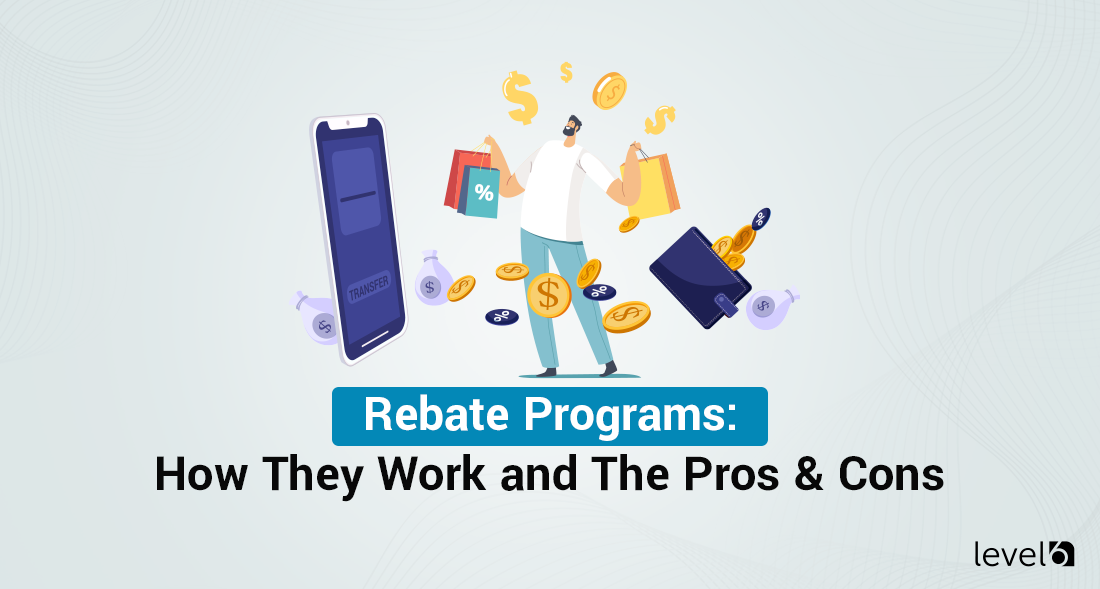
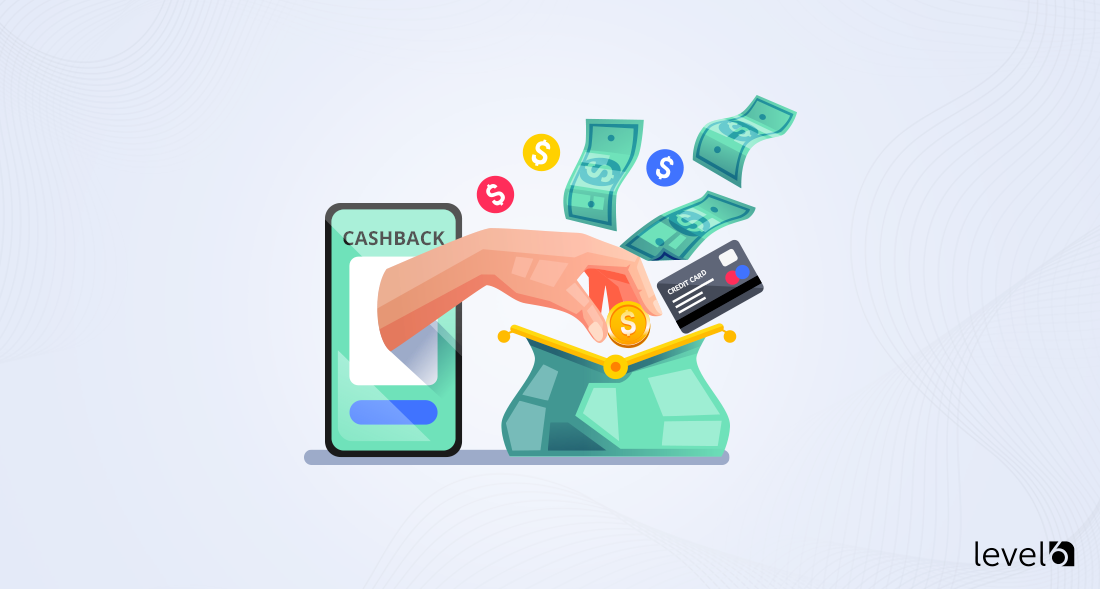
 Demo
Demo

